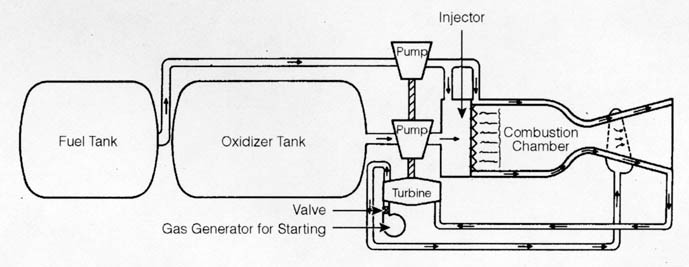liquid-propellant rocket engine

A liquid-propellant rocket engine is a rocket propulsion system that uses a liquid propellant, combining a liquid fuel (such as kerosene or liquid hydrogen) in a thrust chamber with a liquid oxidizer (such as liquid oxygen or fuming nitric acid). Very efficient and controllable, such engines are used extensively in spaceflight. Unlike solid-propellant rocket motors, they can be shut off by remote command, simply by closing off their fuel line. In some cases, the thrust can also be varied over a certain range.
Thrust chamber
The thrust chamber is the heart of a liquid-propellant rocket engine. In its simplest form, the thrust chamber accepts fuel and ozidizer rom the injector, burns it in the combustion chamber, accelerates the gaseous combustion products, and ejects them from the chamber to provide thrust.
Turbopump
A turbopump is a component of some high-thrust liquid-propellant rocket engines. The turbopump increases the flow of propellant to the combustion chamber to increase performance.
Bleed-cycle operation
Bleed-cycle operation is a mode of operation in some liquid rocket engines in which the turbopump is driven by hot gases bled from the combustion chamber assembly during main stage operation.


